สรุป Past Tense
ผนึกปัจจุบันเสมอเป็นกริยาช่วยที่ใช้ในการสร้างกริยาผันแปลงจากปัจจุบันเป็นอดีตในภาษาไทย ในบทความนี้จะอธิบายวิธีการสร้างกริยาผันแปลงจากปัจจุบันเป็นอดีตในภาษาไทยพร้อมกับข้อความของแต่ละกลุ่มและบทความสรุปเกี่ยวกับผนึกปัจจุบันเสมอ
วิธีการสร้างกริยาผันแปลงจากปัจจุบันเป็นอดีต
ในภาษาไทย เราสร้างกริยาผันแปลงจากปัจจุบันเป็นอดีตโดยการเพิ่มตัวหรือคำตอบกริยาช่วยหน้าคำกริยาหลัก สำหรับกริยาที่มีรูปอยู่แล้วในรูปของผนึกปัจจุบันเสมอ เราเพียงเพิ่มกริยาช่วยด้านหน้าของคำกริยาหลักที่เราต้องการจะเปลี่ยนให้เป็นอดีต เช่น
– กิน (kin) → ผักกิน (pak kin) → กิน (kin)
– เห็น (hen) → ไม้เห็น (mai hen) → เห็น (hen)
กริยาช่วยที่ใช้ในการผันแปลงจากปัจจุบันเป็นอดีตในภาษาไทยคือ “ได้” ซึ่งรูปแบบการใช้งานของคำว่า “ได้” ขึ้นอยู่กับคนหรือสิ่งที่ทำปฏิบัติการ เช่น
– ผมไปร้านอาหาร (phom pai raa-an a-han) → ผมได้ไปร้านอาหาร (phom dai pai raa-an a-han)
– เขาเล่นเกม (khao len kem) → เขาได้เล่นเกม (khao dai len kem)
ทัศนคติที่เกี่ยวข้องกับกริยาผันแปลงในอดีตเป็นรูปผนึกปัจจุบันเสมอ นั่นหมายความว่ากริยาตามหรือแท็กซ์กริยาใด ๆ ก็ตามที่มีรูปตามหรือแท็กซ์ของผนึกปัจจุบันเสมอแล้ว เมื่อกำหนดให้เป็นอดีต เราใช้กริยาช่วย “ได้” ร่วมกับกริยาหลักเวลาอดีตของผนึกปัจจุบันเสมอ เพื่อแสดงอดีต
สรรกิจกรรมที่มีความหมายในอดีต
ในกรณีที่เราต้องการสร้างประโยคที่มีความหมายในอดีต เราสามารถใช้กริยาผันแปลงอดีตร่วมกับกรรมประโยคที่เป็นคำนามได้ เช่น
– เมื่อวานนี้ผมเข้าร้านอาหาร (muean-waan-nee phom khao raan a-han) → เมื่อวานนี้ผมไปร้านอาหาร (muean-waan-nee phom pai raan a-han)
มาตรการเหมือนกับกริยาอื่น ๆ ในอดีต
เมื่อเราใช้กริยาผันแปลงในอดีต เราต้องจำตัวแทนในคำสรรพนามของประธานหรือกรรมว่าเป็นใครหรืออะไร เช่น
– เมื่อวานนี้ผมไปอ่านหนังสือ (muean-waan-nee phom pai aang nang-sue) → เมื่อวานนี้ผมไปอ่านเล่มหนังสือ (muean-waan-nee phom pai aang lem nang-sue)
คำถามที่พบบ่อยเกี่ยวกับการใช้อดีต
1. Past tense คืออะไร?
Past tense คือรูปของกริยาที่ใช้เพื่อแสดงเหตุการณ์หรือเหตุผลที่เกิดขึ้นในอดีต หรือเหตุการณ์ที่เคยเกิดขึ้นและจบลงแล้ว
2. Past tense มีอะไรบ้าง?
Past tense มีองค์ประกอบหลัก 3 รูปคือ past simple tense, past continuous tense, และ past perfect tense
3. Past tense ใช้ยังไง?
Past tense ใช้ในการเปลี่ยนกริยาจากปัจจุบันเป็นอดีตโดยการเพิ่มกริยาช่วยหน้าคำกริยาหลัก และรูปร่างของกริยาตามกลุ่มและบทความต่าง ๆ
4. ตัวอย่างประโยค past simple tense 20 ประโยค?
– เมื่อวานนี้ผมวิ่งเข้าป่า (muean-waan-nee phom wing khao bpaa)
– เมื่อวานนี้เขาเปิดประตู (muean-waan-nee khao bpert bprà à dtù)
– เมื่อวานนี้เมากับเพื่อน (muean-waan-nee maw gàp pheuuan)
– เมื่อวานนี้ฉันเล่นกีฬา (muean-waan-nee chán len giì-laa)
5. Simple past tense เป็นอย่างไร?
Simple past tense เป็นรูปประโยคที่ใช้สำหรับเหตุการณ์ในอดีตที่เกิดขึ้นและจบลงแล้ว ซึ่งกริยาช่วยที่ใช้คือ “ได้”
6. past simple tense ตัวอย่างประโยค?
– เมื่อวานนี้ผมได้เจอแฟนเก่า (muean-waan-nee phom dai jer faen gao)
– เมื่อวานนี้ฉันได้ไปเที่ยวทะเล (muean-waan-nee chán dai pai thiiao thale)
– เมื่อวานนี้ผมได้มีเวลาฉีดวัคซีน (muean-waan-nee phom dai mii wela chid wáksin)
– เมื่อวานนี้ฉันได้กินราเมง (muean-waan-nee chán dai kin raa-maeng)
7. past continuous tense ตัวอย่างประโยค?
– เขากำลังเดินในสวน (khao gam-lang dern nai suaan)
– ฉันกำลังอ่านหนังสือ (chán gam-lang aang nang-sue)
– เรากำลังร้องเพลง (rao gam-lang raawng pleng)
สรุป past tense ในภาษาไทยมีหลากหลายรูปแบบและรูปแบบต่าง ๆ ขึ้นอยู่กับความหมายและบทความที่ต้องการเล่า การใช้งานให้ถูกต้องและถูกลำดับเป็นสิ่งสำคัญในการสร้างประโยคในอดีตในภาษาไทย
Past Simple Vs Past Continuous ใช้กับอดีตทั้งคู่ แต่ใช้ต่างกันยังไง | Eng ลั่น [By We Mahidol]
คำสำคัญที่ผู้ใช้ค้นหา: สรุป past tense past tense ตัวอย่างประโยค, past tense มีอะไรบ้าง, past tense ใช้ยังไง, Past Tense คือ, ตัวอย่างประโยค past simple tense 20 ประโยค, Simple past tense, past simple tense ตัวอย่างประโยค, past continuous tense ตัวอย่างประโยค
รูปภาพที่เกี่ยวข้องกับหัวข้อ สรุป past tense
![Past simple VS Past continuous ใช้กับอดีตทั้งคู่ แต่ใช้ต่างกันยังไง | Eng ลั่น [by We Mahidol] Past simple VS Past continuous ใช้กับอดีตทั้งคู่ แต่ใช้ต่างกันยังไง | Eng ลั่น [by We Mahidol]](https://lasbeautyvn.com/wp-content/uploads/2023/07/hqdefault-1366.jpg)
หมวดหมู่: Top 86 สรุป Past Tense
ดูเพิ่มเติมที่นี่: lasbeautyvn.com
Past Tense ตัวอย่างประโยค
Past tense เป็นรูปเจาะจงใช้บ่งบอกถึงเหตุการณ์หรือสถานะที่เกิดขึ้นในอดีต หรือที่เสร็จสิ้นแล้ว ภาษาไทยสามารถใช้รูปของตัวอักษร เสียงทางไวยากรณ์ และคำที่ใช้เป็นคำอุทานต์แสดงช่วงเวลา ในการแสดงอดีตแบบประโยค
เรียนรู้การใช้ past tense ในภาษาไทย เป็นสิ่งสำคัญ เนื่องจากมีบทบาทสำคัญในการเล่าเรื่องราวเกี่ยวกับประสบการณ์ในอดีต ดังนั้น ลองมาดูตัวอย่างประโยคเกี่ยวกับ past tense ในภาษาไทย
1. ช่วยร้ายแล้วตอนนั้นเขาหนีไปเลยช้างเหินหันหลัง (Chuay rai laew ton non nai kao nee lang hin hahn)
– This sentence translates to “He helped and then he ran away quickly.”
2. พ่อของฉันจองโต๊ะอาหารให้เรากินที่ร้านอีสานเวลาเย็น (Phor kong chan johng tau aharn hai rao kin tee rahn eesahn welah yen)
– “My father reserved a table for us at an Issan restaurant for dinner.”
3. เธอพยายามมากที่จะชนะการแข่งขันเดินวิ่งเหยาะแข็ง (Ther paya-yahm mahk tee ja chana gahn kaeng kan dern wihng yahwng kaeng)
– “She tried hard to win the running race.”
4. ทหารดิการให้ยิงระเบิดเพื่อปกป้องที่ประเทศ (Tahan di gahn hai ying rabert peua bpok bpohng tee prathet)
– “The soldier detonated the bomb to protect the country.”
5. เจ้าประเทศให้ความร่วมมือกับเพื่อนบ้านเพื่อสันติภาพ (Jao prathet hai kwaam rua-meu gap peuan ban peua sahn di paep)
– “The leader cooperated with the neighboring country for peace.”
FAQs:
Q1: มีกี่รูปของ past tense ในภาษาไทย?
A1: ในภาษาไทย รูปของ past tense แบ่งออกเป็น 2 รูป คือ “เคย” และ “แล้ว”
Q2: “เคย” และ “แล้ว” แตกต่างกันอย่างไร?
A2: “เคย” ใช้เรื่องเล่าในอดีตที่สิ้นสุดลงแล้ว ส่วน “แล้ว” ตัวเองไม่ได้เป็นคำหรือพยางค์คำอะไร แต่ใช้เป็นคำช่วยกริยาที่แสดงถึงการสิ้นสุดของเหตุการณ์
Q3: คำศัพท์อื่น ๆ ที่ใช้ในการแสดงอดีตแบบประโยคในภาษาไทยคืออะไร?
A3: ภาษาไทยมีคำศัพท์อูฐังสอนใช้เป็นคำอุทานต์ช่วงเวลา เช่น เมื่อวาน (meua-wahn) ใช้บอกถึงเหตุการณ์ที่เกิดขึ้นเมื่อวาน เป็นต้น
Q4: ประโยค past tense ในภาษาไทยมีลักษณะอย่างไร?
A4: พร้อมกับการใช้รูป “เคย” และ “แล้ว” เป็นคำช่วยกริยา เช่น “เขาเคยมาเยี่ยมเรา” (khao kay mah yiam rao) หรือ “ผมอัปเดตงานแล้ว” (phohm ap-det ngaan laew) คำอื่น ๆ ในประโยค ไม่มีรูปแบบที่แน่นอนและอาจมีคำอื่น ๆ เป็นภาคผนวกเพื่อสร้างความหมาย
Q5: เมื่อใดต้องใช้ past tense ในภาษาไทย?
A5: เราใช้ past tense เพื่อเล่าเรื่องราวหรือสถานการณ์ที่มีการเกิดขึ้นในอดีตหรือเสร็จสิ้นแล้ว เช่น “พ่อของฉันเคยสัญญาว่าจะซื้อของเล่นให้ฉัน” (phor kong chan kay sanyah wah ja seu khong len hai chan)
การใช้ past tense เป็นส่วนสำคัญในการเรียนภาษาไทย ในการฝึกการพูด การอ่าน และการเขียน ในการเล่าเรื่องราวในอดีต โดยส่วนใหญ่จะเป็นในรูปของประโยค และบางครั้งอาจมีคำอาจเกี่ยวข้องที่เป็นคำอุทานต์ช่วงเวลาด้วย
อย่าลืมฝึกการใช้ past tense ในภาษาไทยเพื่อเป็นการปรับปรุงทักษะในการสื่อสาร และประสบความสำเร็จในการเรียนรู้ภาษาไทยแบบครบถ้วน
Past Tense มีอะไรบ้าง
In Thai, the past tense can be formed in several ways. The most common method is by using the word “เคย” (kəəy). Adding “เคย” before a verb indicates that the action took place in the past. For example, the phrase “I ate” would be translated as “ผม/ดิฉัน/คุณ กินเคย” (pŏm/dì-chǎn/khun gin kəəy). Similarly, “I went” would become “ผม/ดิฉัน/คุณ ไปเคย” (pŏm/dì-chǎn/khun bpai kəəy).
Another way to express the past tense is by using the word “เมื่อ” (mʉʉa), which means “when” or “once.” By placing “เมื่อ” at the beginning of a sentence, one can indicate that the event or action mentioned in the sentence has already happened. For instance, “I saw him” would be translated as “ผม/ดิฉัน/คุณ เมื่อเขา” (pŏm/dì-chǎn/khun mʉʉa khăo).
Additionally, Thai also utilizes time indicators to express the past tense, such as “เมื่อวาน” (mʉʉa wāan) meaning “yesterday” or “วันที่ผ่านมา” (wan tìi pààn maa) meaning “the past day.” These time indicators can be added to a sentence to indicate that the action occurred in the past. For example, “I studied yesterday” would be translated as “ผม/ดิฉัน/คุณ เรียนเมื่อวาน” (pŏm/dì-chǎn/khun rian mʉʉa waan).
Negating the past tense in Thai is relatively straightforward. To create a negative past statement, one only needs to add the word “ไม่” (mâi) before the verb. For instance, “I didn’t go” would be translated as “ผม/ดิฉัน/คุณ ไม่ไป” (pŏm/dì-chǎn/khun mâi bpai).
Now, let’s move on to some frequently asked questions about the past tense in Thai:
Q1: Can I use “เคย” for all past actions?
A: No, “เคย” is used to express past actions that have happened multiple times or actions that one used to do but no longer does. For singular events or actions that happened once in the past, it is more appropriate to use other expressions like “เมื่อ,” “เมื่อวาน,” or specific time indicators.
Q2: Are there irregular verbs in the past tense?
A: No, Thai does not have irregular verbs in the past tense. The conjugation remains the same regardless of the verb.
Q3: What if I want to express a past ongoing action?
A: To express a past ongoing action, you can use the word “กำลัง” (gam-lang) before the main verb. For example, “I was eating” would be translated as “ผม/ดิฉัน/คุณ กำลังกิน” (pŏm/dì-chǎn/khun gam-lang gin).
Q4: How do I form questions in the past tense?
A: In Thai, forming questions in the past tense requires the use of question particles. Simply add the question particles “ไหม” (mǎi) at the end of the sentence. For example, “Did you go?” would be translated as “คุณ ไปไหม” (khun bpai mǎi).
Q5: Can I use time indicators alone to express past actions?
A: Yes, but it might sound less specific. Using time indicators like “เมื่อวาน” or “วันที่ผ่านมา” alone without mentioning the verb can still imply that the action took place in the past. However, it is generally better to include the verb to be more precise.
Q6: Are there any other ways to negate the past tense?
A: Besides using “ไม่” before the verb, you can also use the word “ยัง” (yang) after “ไม่” to indicate that the action has not happened yet. For example, “I haven’t eaten” would be translated as “ผม/ดิฉัน/คุณ ยังไม่ได้กิน” (pŏm/dì-chǎn/khun yang mâi-dâi gin).
In conclusion, understanding how to form and use the past tense in Thai is crucial to effectively communicate about past events or actions. Whether by using “เคย,” “เมื่อ,” or specific time indicators, expressing the past in Thai is relatively straightforward. By familiarizing yourself with these concepts and practicing their usage, you will be well-equipped to engage in past tense conversations in Thai.
Past Tense ใช้ยังไง
The Thai language, with its complex grammar and extensive vocabulary, can be both intriguing and perplexing for language learners. One aspect that often poses a challenge is the use of past tense. In Thai, the past tense is expressed through a combination of verb markers, temporal words, and other grammatical elements. In this article, we will delve into the intricacies of past tense usage in Thai and provide you with a comprehensive guide to mastering this grammatical aspect.
Understanding Past Tense in Thai
In Thai, the past tense is indicated by the addition of verb markers, which are crucial in determining the time frame of an action. The most commonly used verb markers for the past tense are “แล้ว” (láew) and “มาแล้ว” (maa láew). While “แล้ว” can be translated to “already” in English, “มาแล้ว” indicates an action that has happened before a specific point in time.
For instance:
1. เขากินข้าวแล้ว (khǎo kin kâao láew) – He/She has already eaten.
2. เขาอ่านหนังสือมาแล้ว (khǎo àan nǎng sǔea maa láew) – He/She had read the book.
Temporal Words and Phrases
In addition to verb markers, Thai employs temporal words and phrases that provide a timeline reference for past events. These words help to establish the time frame in which an action took place. Here are some commonly used temporal words in Thai:
1. เมื่อวาน (mʉ̂a-waan) – yesterday
2. เมื่อวันก่อน (mʉ̂a-wan-kɔ̀ɔn) – a few days ago
3. ตอนที่ผ่านมา (dtɔɔn-thîi-phàan-maa) – the past
4. ก่อนหน้านี้ (kɔ̀ɔn-nâa-níi) – before this
5. เมื่อก่อน (mʉ̂a-kɔ̀ɔn) – previously
For example:
1. เมื่อวานผมไปเที่ยว (mʉ̂a-waan phǒm pai thîao) – Yesterday I went sightseeing.
2. เมื่อวันก่อนเขากลับบ้านเร็ว (mʉ̂a-wan-kɔ̀ɔn khǎo glàp bâan reo) – A few days ago, he/she went home early.
Using the Word “เมื่อ” (mʉ̂a)
“เมื่อ” (mʉ̂a) is a versatile Thai word that can be used to indicate past actions as well. When “เมื่อ” (mʉ̂a) is placed at the beginning of a sentence, it acts as a marker for past tense, similar to “when” or “once” in English.
Examples:
1. เมื่อขุนเม็ดมาถึงที่นี้ ทุกคนยินดีต้อนรับ (mʉ̂a khun-mét maa tʉ̂ng thîi nîi thúk-khohn yin-dii dtɔ̂ɔn-ráp) – Once Khun Met arrived here, everyone welcomed him warmly.
Sentence Structure for Past Tense
To properly construct past tense sentences in Thai, it is important to follow the appropriate sentence structure. Generally, the structure for past tense sentences consists of subject + verb + object + time marker. However, it is worth noting that Thai grammar is flexible, and the placement of time markers can vary based on the context.
Example:
1. เขาอ่านหนังสือเมื่อวาน (khǎo àan nǎng sǔea mʉ̂a-waan) – He/She read the book yesterday.
2. พ่อฉันช่วยซื้อขนมที่ตลาดเมื่อสัปดาห์ที่แล้ว (phɔ̂ɔ chǎn chûay séu kà-nǒm thîi talàat mʉ̂a-sàp-daa thîi-láew) – My father bought some snacks at the market last week.
FAQs about Past Tense in Thai
Q: Can I use only the verb markers to indicate past tense or do I need temporal words as well?
A: To accurately convey the past tense in Thai, it is recommended to use both verb markers and temporal words/phrases. This combination provides a clear time frame for the past action.
Q: Are there any irregular verb forms in past tense?
A: No, Thai verbs remain the same in their base form when used in past tense sentences. The past tense is solely expressed through verb markers and temporal words.
Q: Can I use “แล้ว” at the end of the sentence?
A: Yes, it is common to place “แล้ว” at the end of a sentence to indicate that an action has already occurred. However, it is essential to note the context and ensure that the usage is appropriate.
Q: Are there any exceptions to the basic sentence structure for past tense?
A: Although subject + verb + object + time marker is the most common sentence structure for past tense in Thai, exceptions can occur based on contextual factors and personal style. As you progress in your Thai language journey, you will encounter various sentence structures for past tense.
In conclusion, mastering the past tense in Thai requires a solid understanding of verb markers, temporal words, and sentence structure. By incorporating these elements into your language practice, you will gradually develop the ability to express past actions effortlessly. Remember to pay attention to context and be open to variations in sentence structure. With practice and perseverance, you will confidently navigate the complexities of the past tense in Thai.
มี 44 ภาพที่เกี่ยวข้องกับหัวข้อ สรุป past tense.

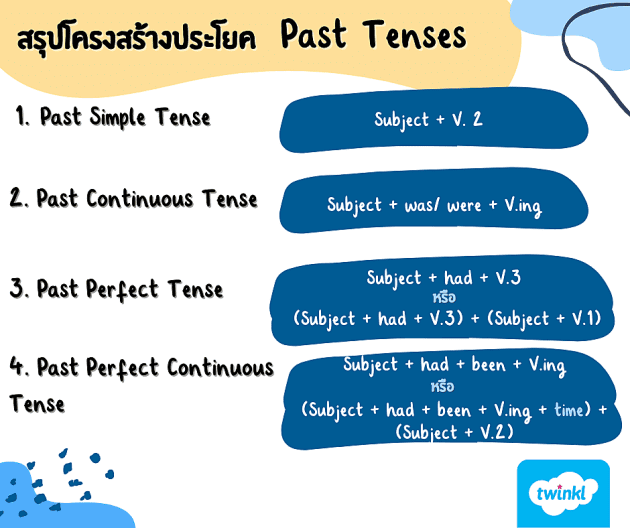


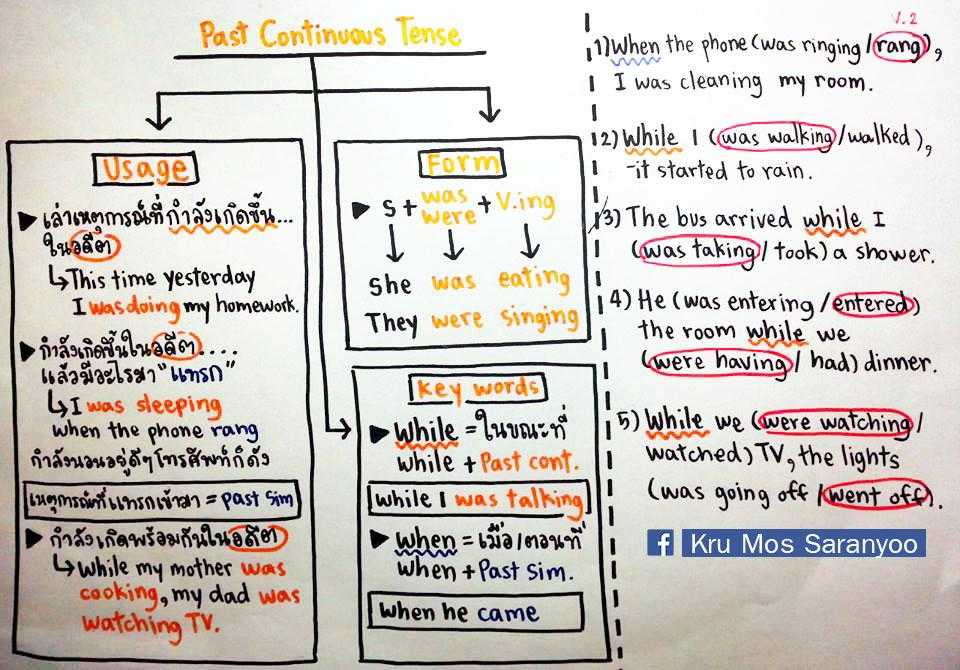
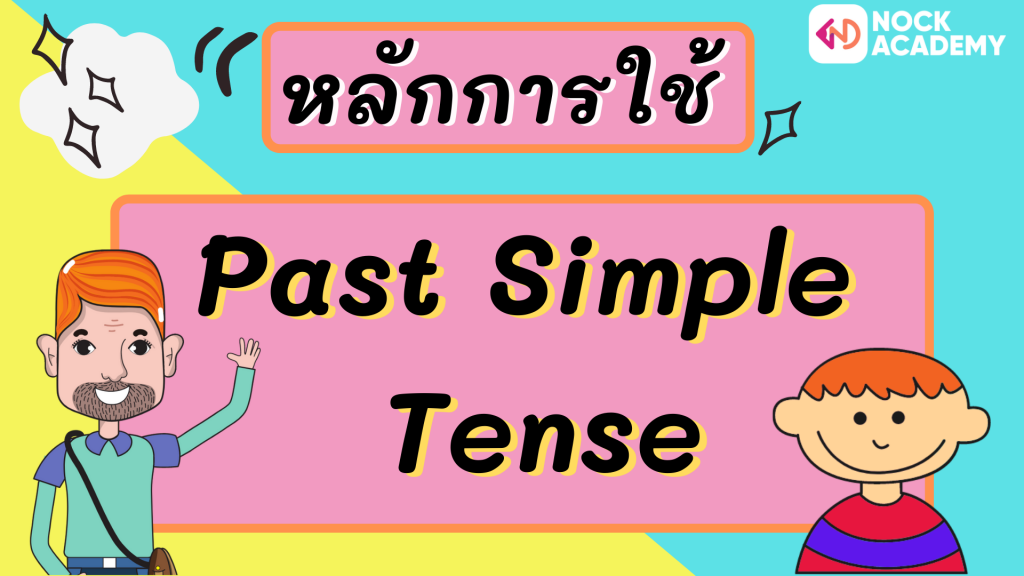




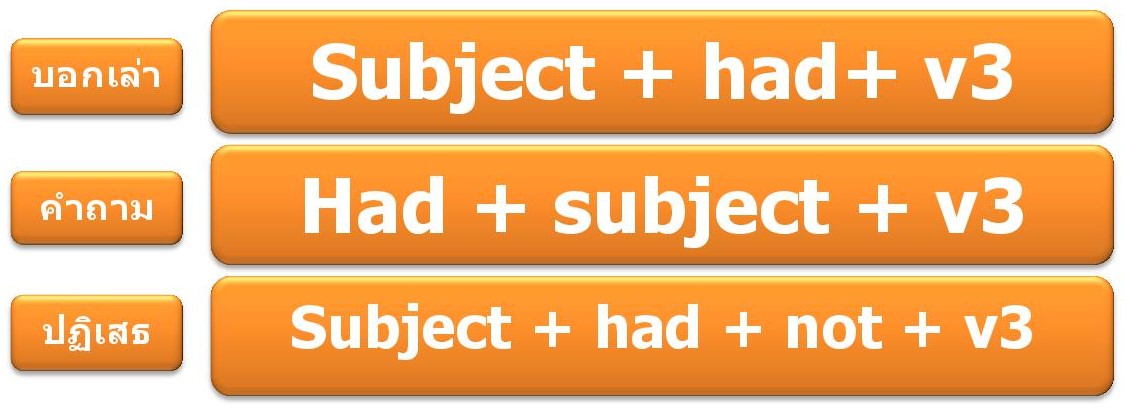
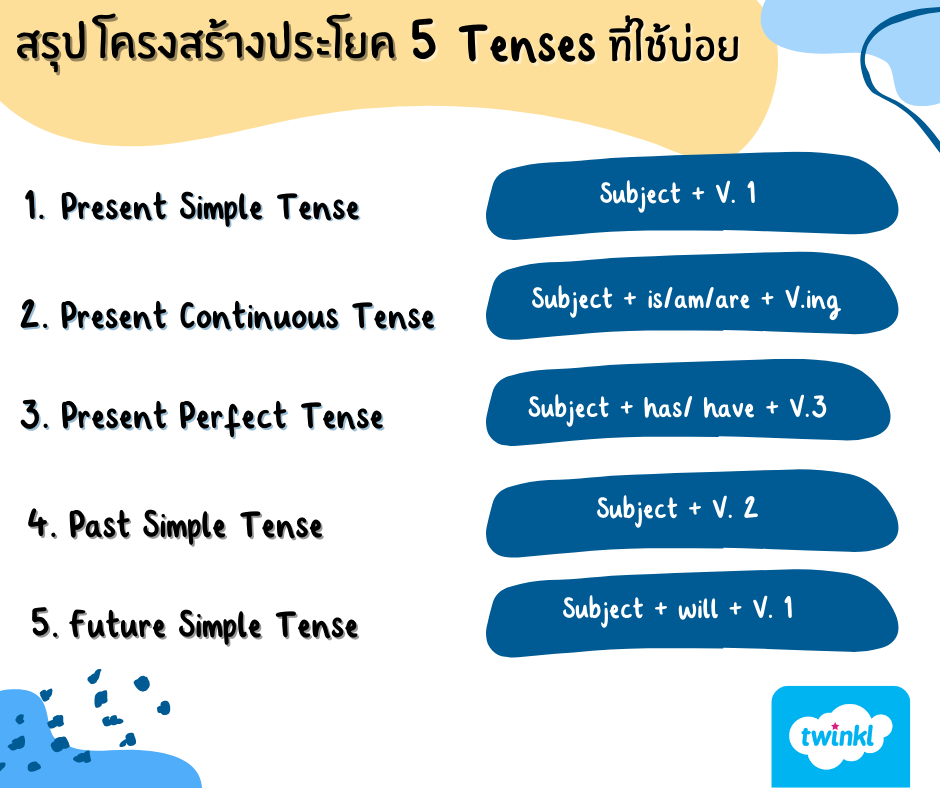
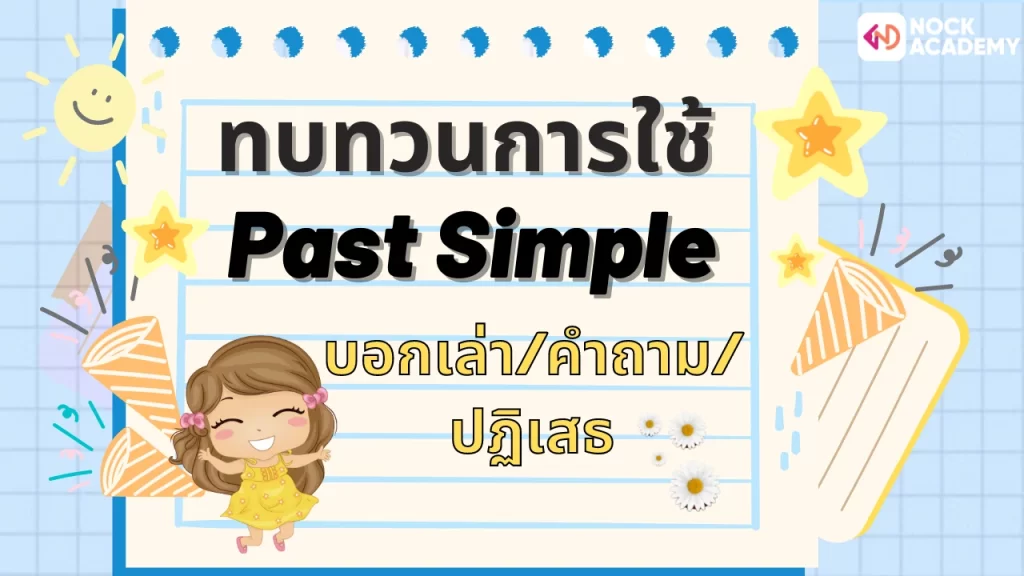
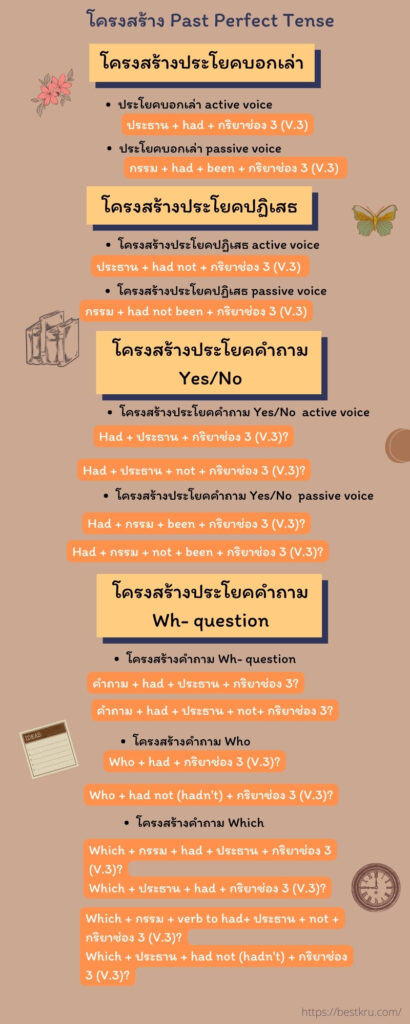



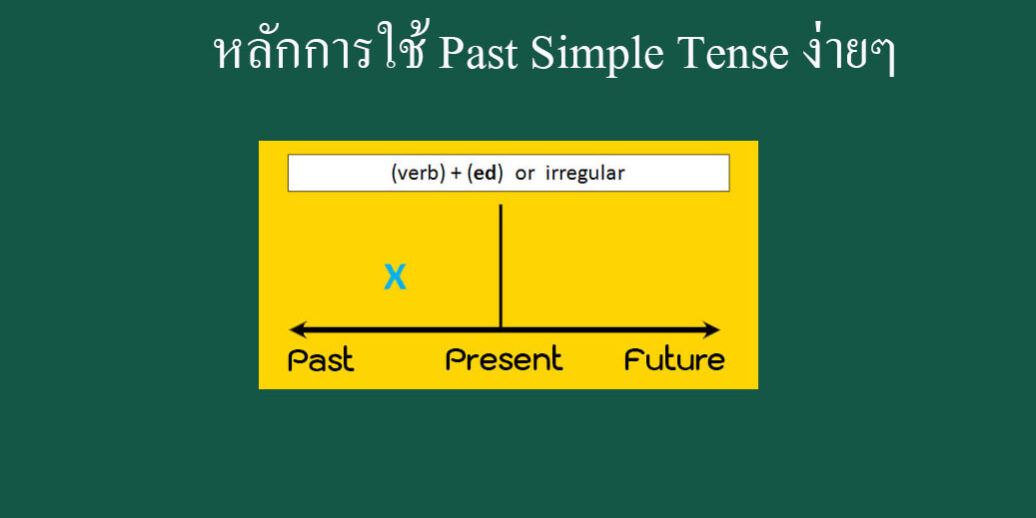
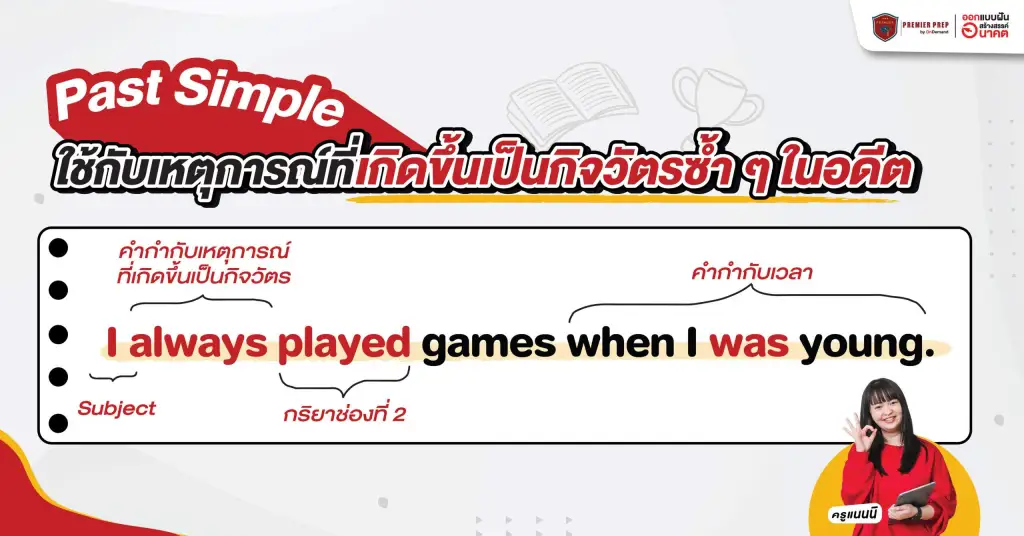

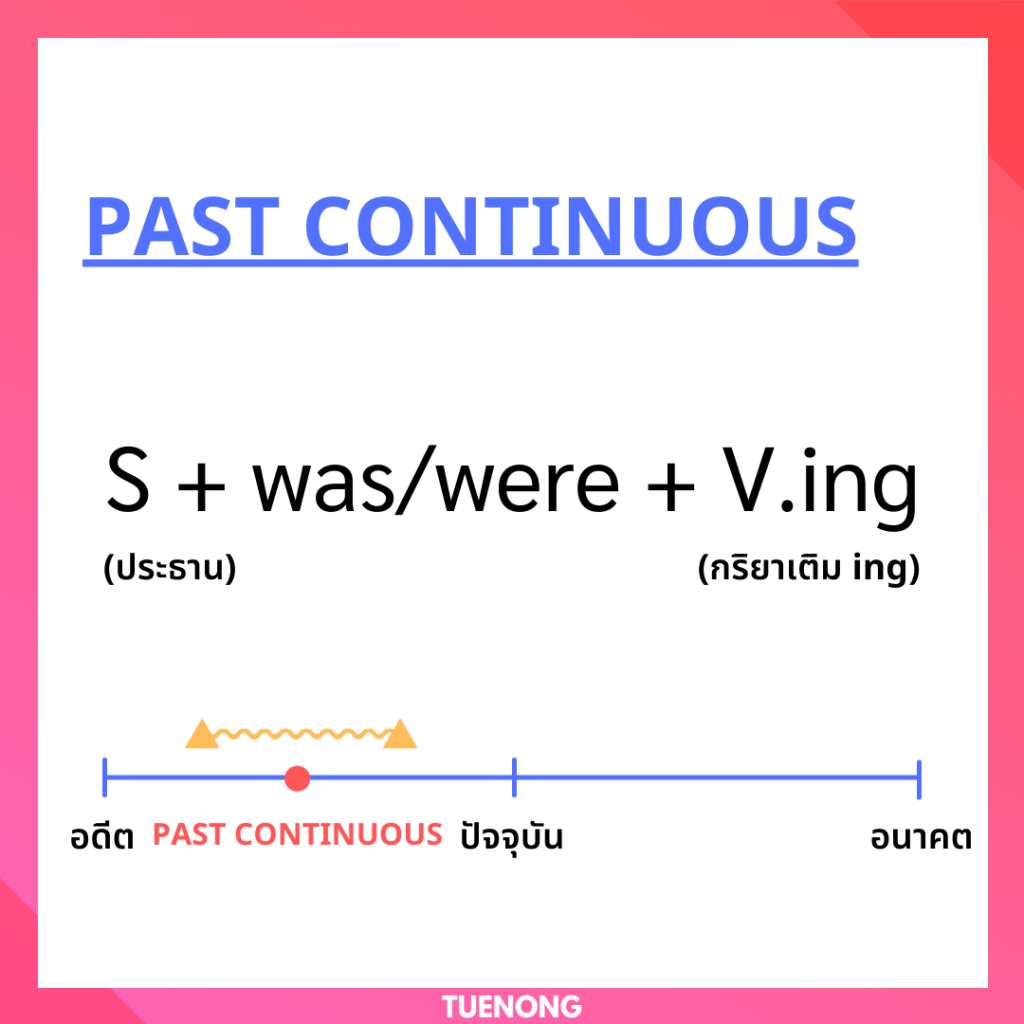
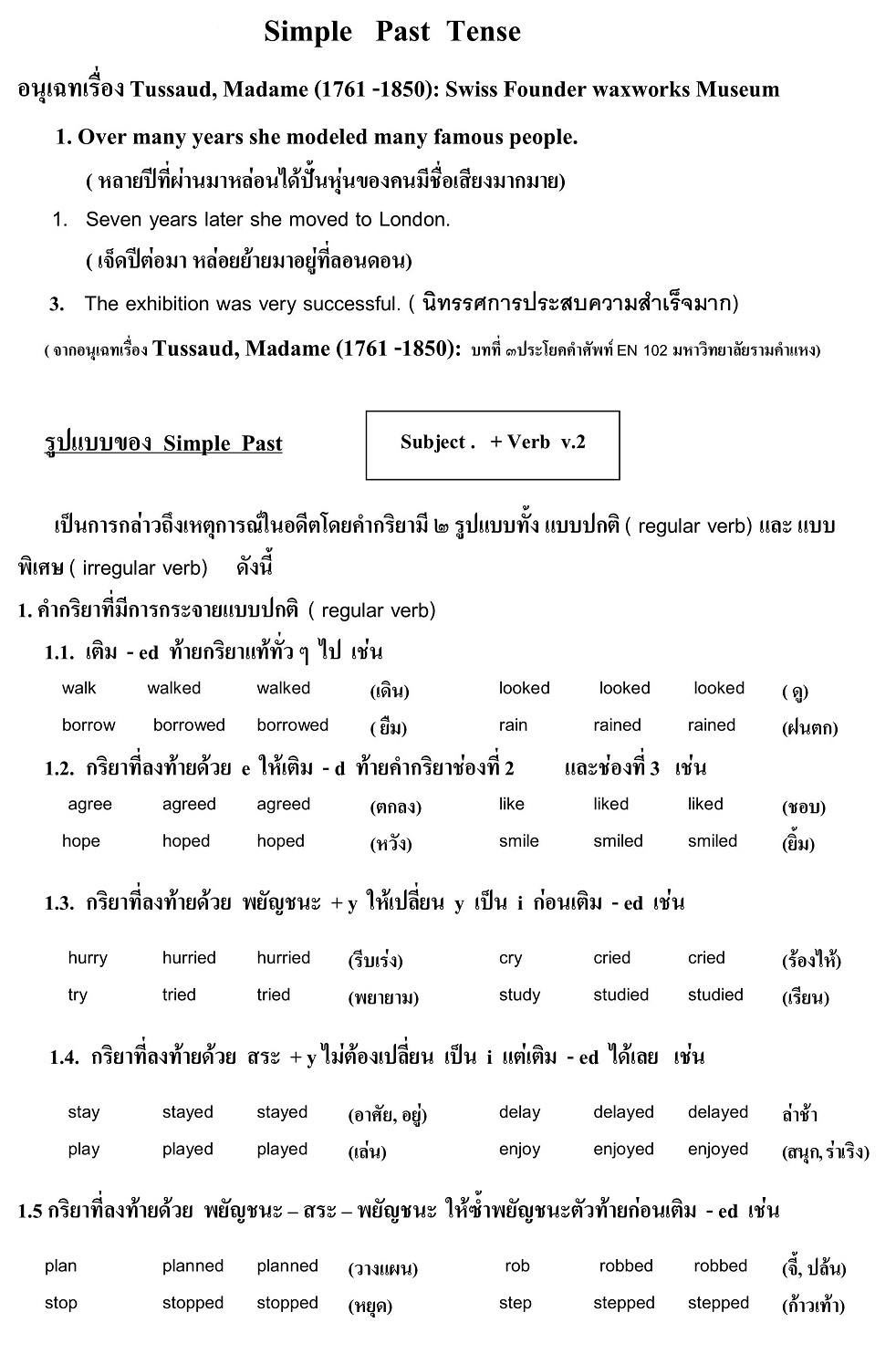

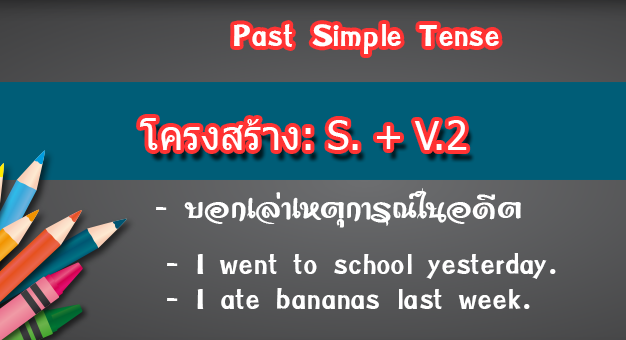


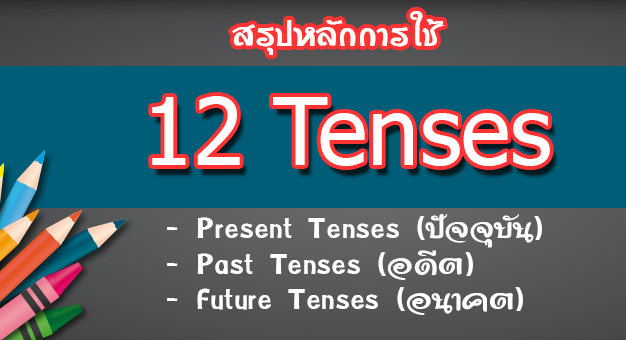
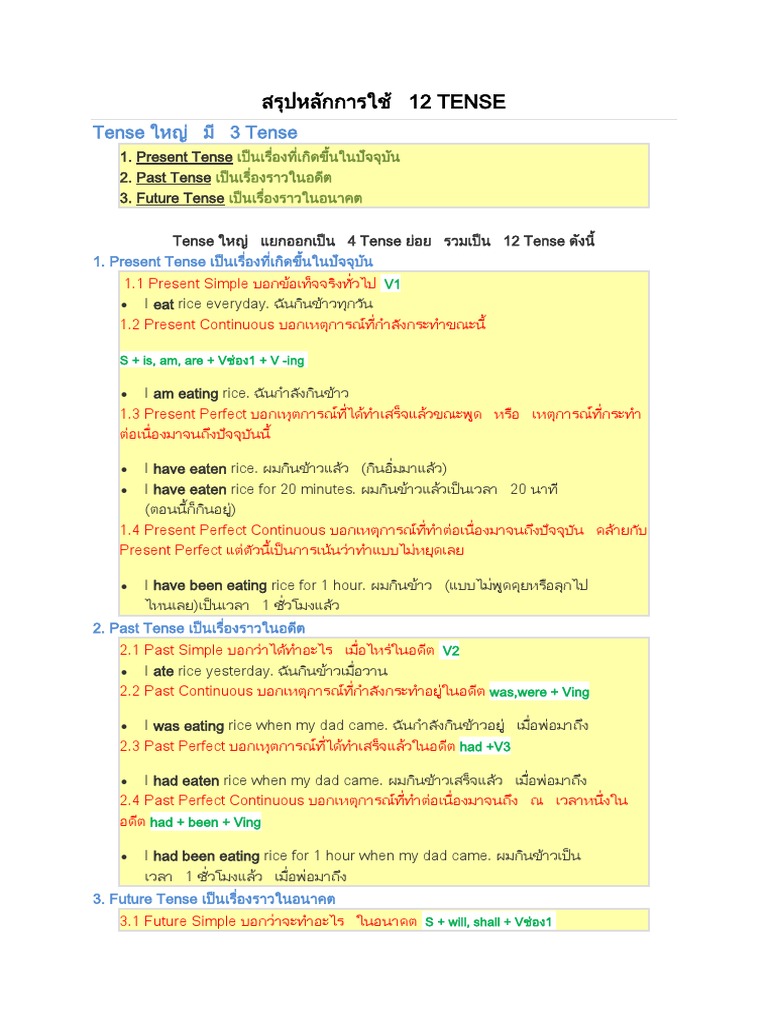
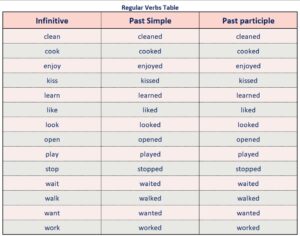

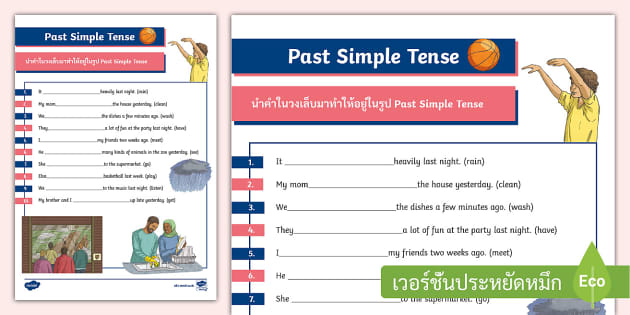


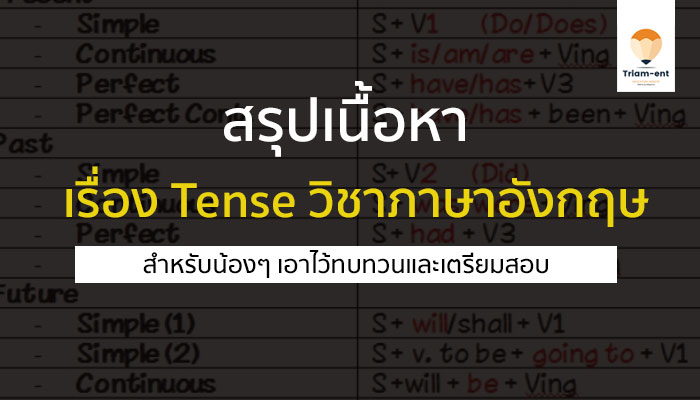

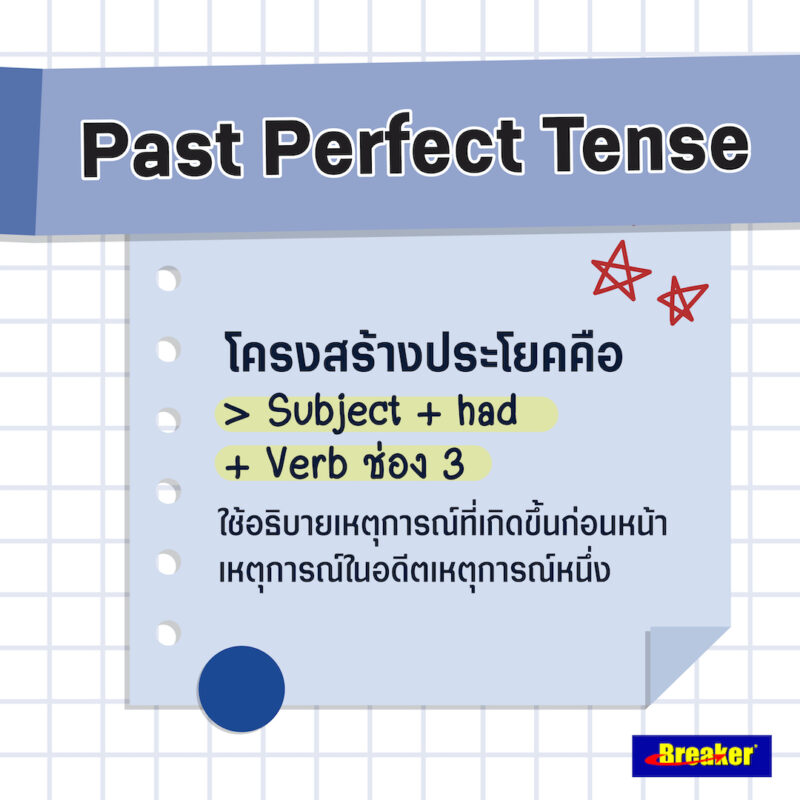


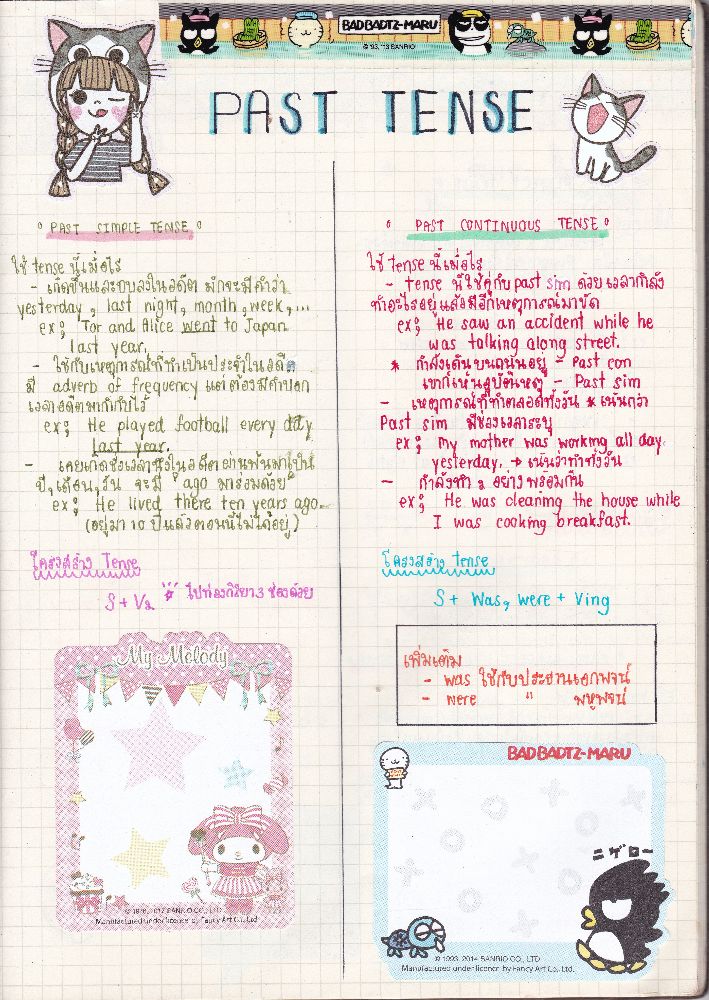
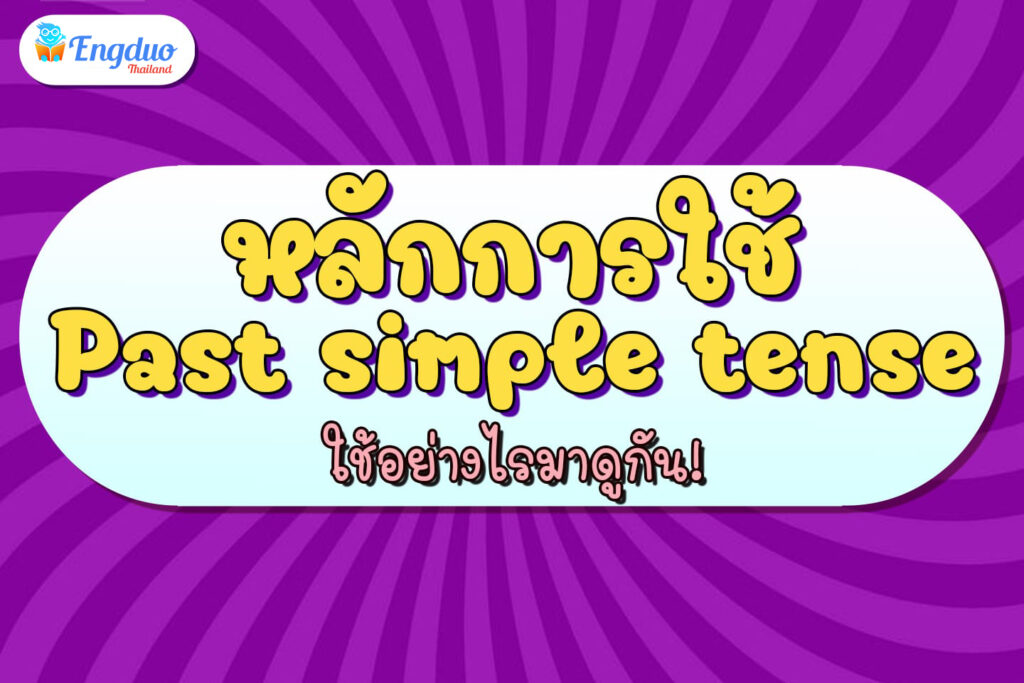

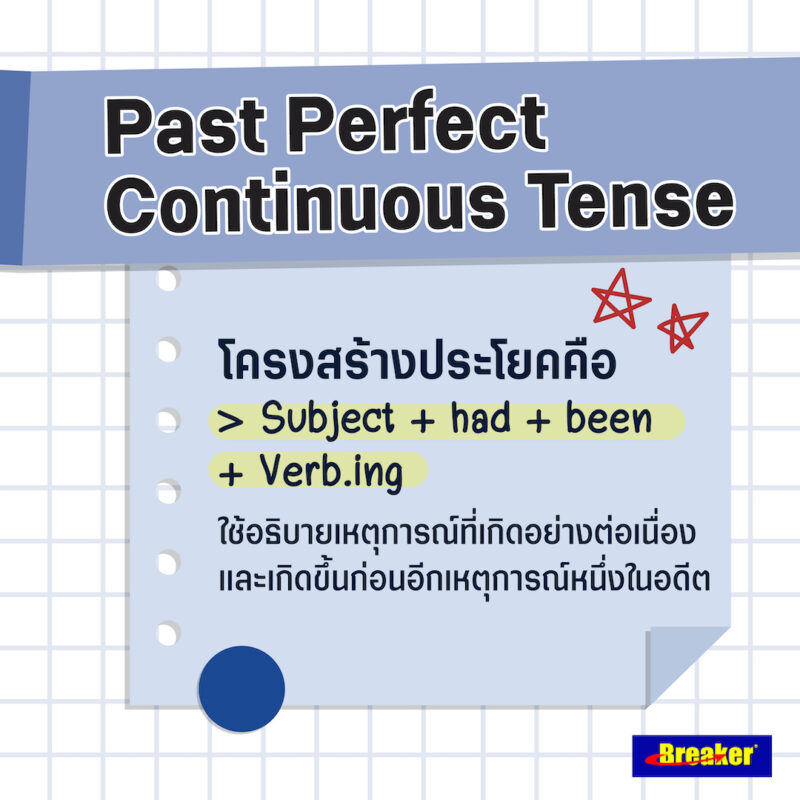
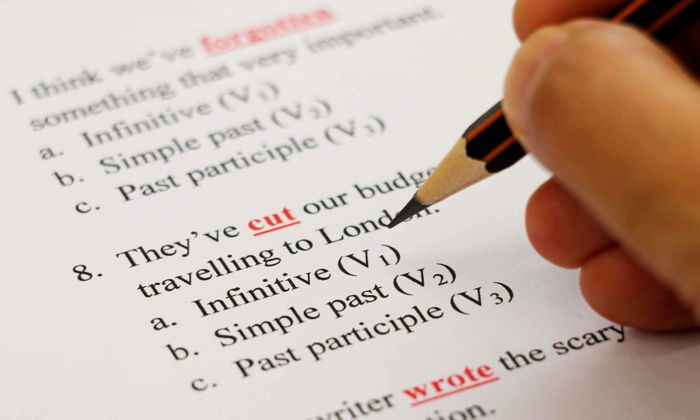
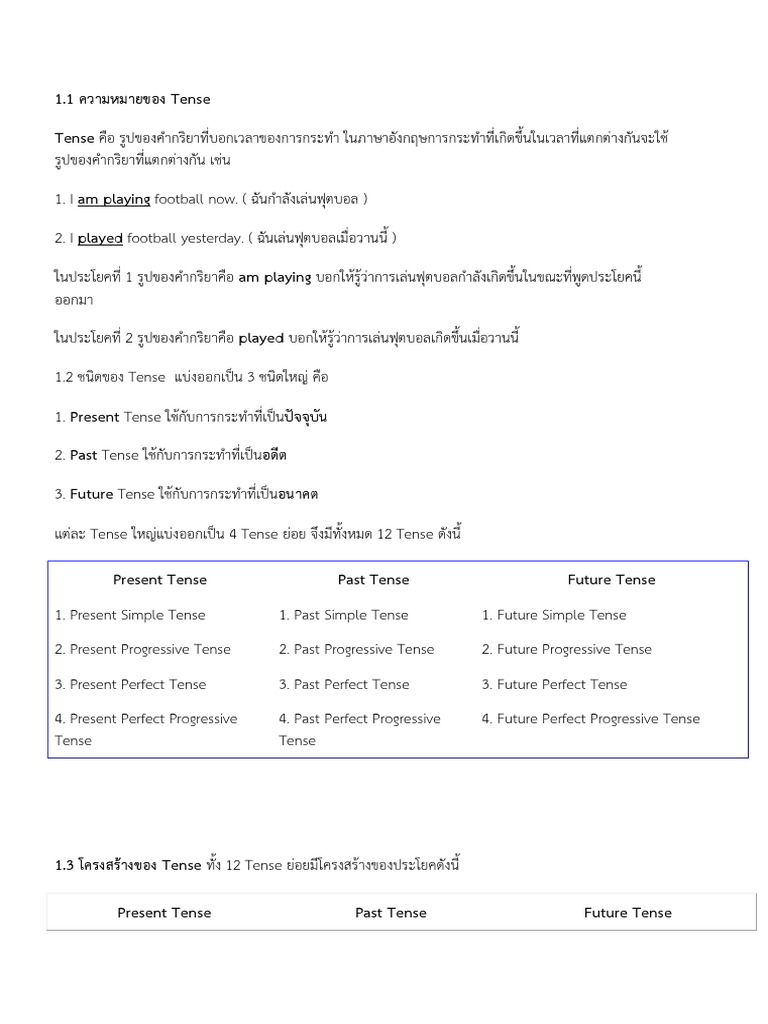



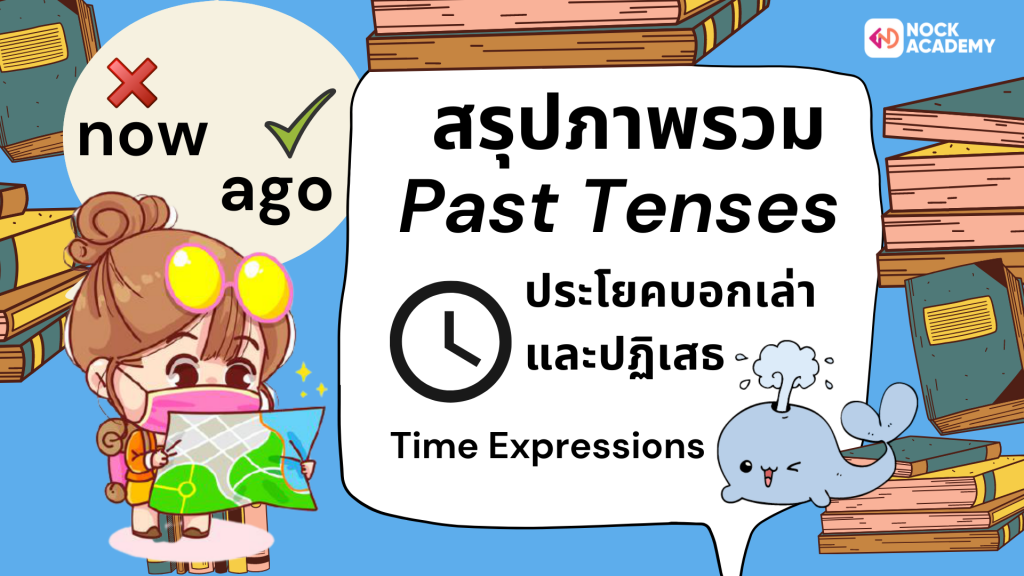

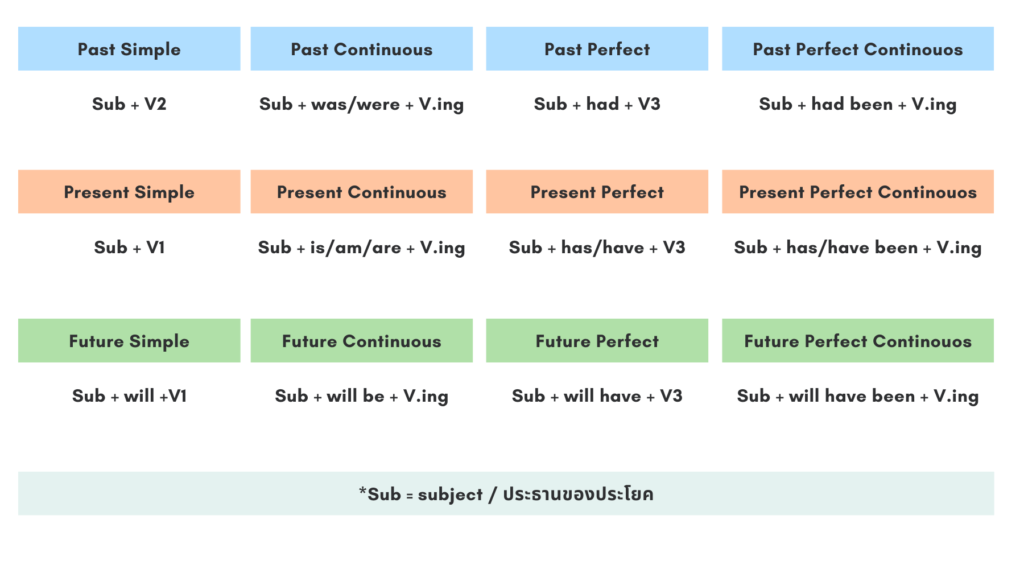
ลิงค์บทความ: สรุป past tense.
ดูข้อมูลเพิ่มเติมเกี่ยวกับโพสต์หัวข้อนี้ สรุป past tense.
- Grammar: หลักการใช้ Past Tense : เล่าอดีตได้อย่างมือโปรเหมือน …
- เทคนิคการใช้ Past Tense ในการเล่าเรื่อง ลำดับเหตุการณ์ แบบฉบับ …
- สรุปวิธีการใช้ Past Simple ฉบับรวบรัด – Globish
- วิธีใช้ Past Tense ในการเล่าเรื่อง ฉบับเข้าใจง่ายที่สุดในโลก
- สรุป Past Tense ภาษาอังกฤษทั้งหมด – Wall Street English
- Past Simple Tense คืออะไร : สรุป เข้าใจง่าย – English Down-under
- Past Tense เทคนิคการเล่าเรื่องในอดีต แบบฉบับเข้าใจง่าย 2022
- Simple past tense | EF | ประเทศไทย – EF Education First
- หลักการใช้ Past Tense แต่ละแบบ – tonamorn.com
- Past Tenses
ดูเพิ่มเติม: blog https://lasbeautyvn.com/category/digital-studios